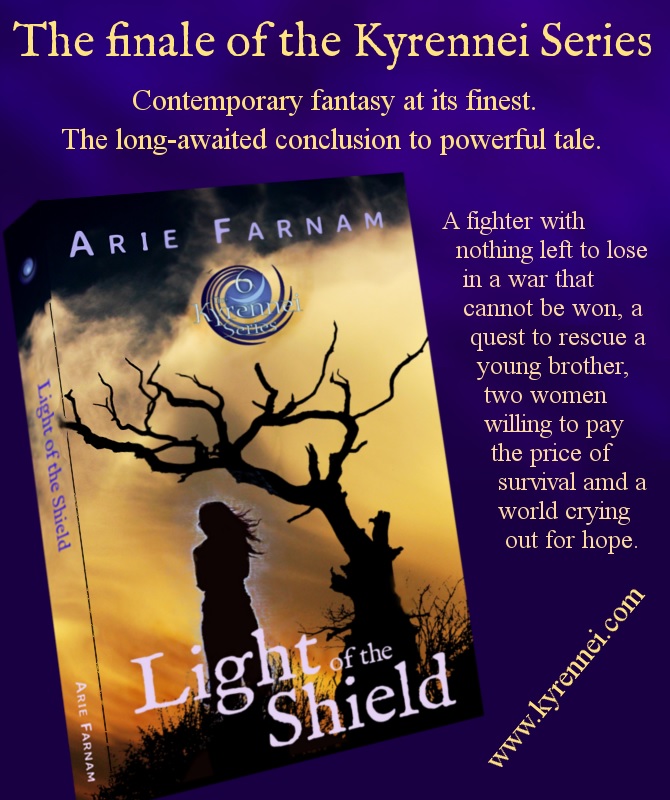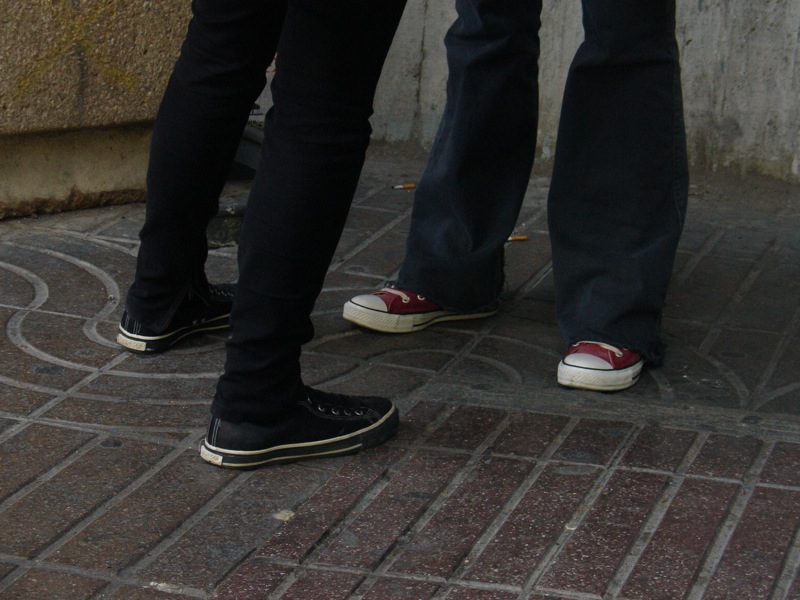The long road to "That isn't on me."
/A young girl wrote wrenching words to a group I’m in. So young. A pretty, thin teen with charcoal hair, umber skin and eyes that clearly move non-traditionally. .
She said she was struggling with the concept that she would never be able to do so many things she wanted to because she was born blind: ”I wanted to drive a car, sneak out with friends, go to parties, have a sleep over… And I wanted to see and flirt with cute guys. That was the life i was excited for. Now I’m realizing it wasn’t meant for me.”
A lot of people wrote back, telling her to believe in herself, not to set limits on her dreams. “Blindness doesn’t have to define you…” But others admonished her for appearing to ask for sympathy, even though this was a support group for blind people, not exactly mixed company. “Don’t fish for pity…” Yadda yadda yadda….
But I read her words over again and sat lost in thought. This girl wasn’t limiting her dreams. I don’t hear her saying she can’t be a scientist or a professional athlete or president. I hear her saying some very real things. Yup, driving a car is out for us. We learn that early on.
But then there are the other things—the social life, the little crowd of friends, the parties, the giggling under the covers when a friend spends the night, the staying out ‘til the streetlights come on or sneaking out afterwards.
Image via Pixabay - Two girls with arms around each other’s shoulders pumping their fists with a bleak gray background.
That isn’t a girl limiting her dreams. She has a couple of friends, kids of her parent’s friends, who have known her since before her difference was “weird.” But they also have their crowd and the cost of inviting along one’s geeky blind childhood friend with the creepy eyes is steep. There may be someone out there who would do it, but most blind kids aren’t lucky enough to have a badass, social daredevil for a friend.
This girl isn’t limiting her dreams or fishing for pity. She’s just expressing sorrow over coming to grips with things that are denied to her. She’s young and she has probably been told she can do “anything, even if you’re blind” by people who mean well and who also don’t want to feel uncomfortable emotions. And she’s starting to find out that it’s not entirely true.
If she is making a mistake, it is only in lumping the social things together with driving a car, as if they too were a natural consequence of blindness. They aren’t. But I didn’t know that when I was that age either.
I remember being fourteen and noticing the blurry sunlight in my bedroom window turn orange, signaling the end to another solitary Saturday in June, listening to the happy yells of teenagers in the alley through that open window. That day—for the first time—I knew where the party was. Someone had let it slip within my hearing at school. I didn’t know who lived there, but it was just a couple of blocks over.
I put on my jean jacket, which had once been fashionable back when I went through a phase of studying fashion and trying really hard to be “with it.” I put my hair in a scrunchy and walked the two blocks to the place where the party was happening. I put a smile on, carefully rechecking it internally—not too big or obvious but enough to be friendly. The door was open with music blaring out, so I walked up the steps past a couple of guys sitting out front.
No one acknowledged me. I couldn’t see their faces. But my little bit of residual sight and their breathing and low conversation told me they were all guys. They might not even really know me, but I could tell they were my age, not grownups. I slipped into the doorway, which was festooned with streamers. The bold, cheerfully brash tones of the 1980s screeched from speakers and the sound inside was so loud that most of my skill at echolocation was wiped out.
There were girls dancing just inside. I could tell by their dim silhouettes and their giggles. There was a burst of laughter and someone slammed into me, pushing me against the wall and sloshing a drink across my chest. The girls erupted into gales of laughter. Then they were gone, scurrying away into the crowd of amorphous shapes.
I looked down and sniffed. Sprite. Well, at least it was clear and only a bit of my shirt was wet. I was used to rough and tumble with two brothers, so I wasn’t immediately sure that I wasn’t welcome. I stood against the wall for a long time, observing as best I could and trying to look friendly and “with it.”
I could hear the occasional voice I recognized from school. I didn’t know the names to go with those voices. The other kids were only ever introduced at the beginning of the year and then they only said their name out loud once in home room. That wasn’t enough to capture the voices and put names to the kids nearest me in school. But after a few months I did know when kids from my class were close by from their familiar voices.
Even so, no one spoke to me. A few dancers stepped on my toes or pushed me aside a bit with gradually increasing force. But no one directed so much as, “oops!” to me.
Finally, someone whose face I couldn’t see came up and took my shoulders, steering me toward the door. And I went. I made sure I was steady enough to keep them from pushing me down the steps, but I didn’t resist. I walked home along the sidewalk, my head up, pretending I didn’t care.
It wasn’t the first time I experienced that kind of cold shoulder and rejection, and it wasn’t the last by a long shot. But it was the last time I tried just going to a party put on by my classmates that I had heard about. And it was the only private party for teens I went to during high school.
Nope. No one ever invited me. There were a couple of kids I was friends with at the three different schools I attended during my teens, but they weren’t either the partying type or in a position to throw a party.
Is not getting invited to parties the worst thing in the world? Of course not. I lived in a sheltered, nice small town. I didn’t have to worry about hunger, violence or familial abuse. A lot of teens have terrible problems that I didn’t have. But when I crept out of my window on Halloween to roam the streets, I did it alone, a real ghost walking in the dusk with kids speeding by, shouting and laughing in their own pursuits.
I wanted so badly to be part of a happy and inclusive crowd, to feel friends’ arms around my shoulders from either side, to share my excitement with someone, to laugh at their jokes and to know that if I fell behind they’d reach out to pull me along because I was one of the pack.
All these years later, I know what the pretty teenage girl is talking about. I listened to well-meaning adults back then. I went to a self-esteem building program called “Wings” and I chanted affirmations before going to bed every night. All those messages from adults warned me that the worst thing a person with a disability can do is to complain or elicit sympathy from others.
Now, with the experience of an extra thirty years, those people telling this girl not to “put limits on her dreams” or “fish for pity” make me want to gnash my teeth.
Instead, I wrote to her: “I hope you know that you can do all those things as well as anyone, with the sole exception of driving a car. The problems you have doing these things are what we call a ‘social construct.’ It isn't ‘meant to be.’ It isn’t God or biology or your body that has taken those things from you. I snuck out of windows as a teenager. I was quite good at it in fact. But no friends ever did it with me because I had eyes like yours. These things were ‘off-limits’ only because of social constraints.”
“As for putting limits on one’s dreams, I have been a war correspondent for The Christian Science Monitor, a major international publication. I have published ten books and travelled in 35+ countries. I am raising two kids. I have built rock walls with my own hands. I have fed my family by farming the land. Believe me. I am not a blind person who puts limits on myself or spends time in self pity or in fishing for other people’s sympathy.”
“But society does put limits on me. For years, I beat myself up mentally because I wanted what you want and I thought it was me that was the problem. I thought I should learn to accept it. That’s what my mentors told me. And they didn’t blame me exactly, but they implied that the exclusion was my fault, or at least a consequence of not doing enough to accommodate sighted people. I thought I just needed to try harder.”
“Now I’m almost forty-five and I want to tell you that that is bullshit. Certainly, avoid putting limits on your dreams. But your words don’t sound like that to me. I was a nice, friendly girl with a ton of interests and a good sense of humor. But I didn’t get to go to parties and I had precious few sleepovers, almost entirely with the kids of my parent’s friends. I didn't limit myself. Society and prejudiced people did. I was outgoing and friendly. I got kicked down, told ‘Oh, it's just for us and a few close friends!’ or ‘Maybe sometime!’ or just given a cold shoulder so many times there is no counting. That's society. That's prejudice, even bigotry. Call it what it is. Don’t blame yourself and I hope the people telling you to try harder and implying you are fishing for sympathy are reading this too, because putting this on you is abusive.”
“I wish I could give you a hug. I hope you will find your own dreams and follow them. But I’ve also got to tell you that this crap that is social exclusion has nothing to do with you. It’s all on them. I’m sorry to say that it isn’t likely to change soon, but you will find the occasional person who is open-minded and a real friend. Value them and give them your best side. Try not to let the negativity of bigots make you bitter, so that you can still turn around and be a good friend to those who are ready. But don't blame yourself because it just isn't about you or even about blindness. It's about the same old sickness of our society that brings racism, sexism and all the rest of it.”
That may seem harsh, calling kids “bigots” because they don’t invite the blind girl in their class to a casual party. But that is actually putting it mildly and with a large dose of emotional distance.
I did meet a new friend that same year—when I was fourteen—who was ready to be friends with the blind girl next door. At least a little. Like a lot of friends, she didn’t act like she knew me in public. That was okay with me. Or at least it was worth the price. She was a good friend and we shared real interests, like the medieval history club.
Life happened and even though my life took me away from that small town and around the world over the next couple of decades, circumstances brought that friend a lot closer and into the circle of my family. There have been a lot of times when social things were tough, and I’d think of the handful of people I could really count on—my friend from that old neighborhood among them. We’ve supported each other through some very tough times.
This past year, divisions split many friends in the US and while we agree on almost everything, there were some things we didn’t see eye to eye on. There came a moment when my friend was so angry that she lashed out at me in text.
As happens with a lot of arguments, my friend made it personal. But instead of just calling me argumentative or selfish or closed-minded or insulting my sources—all things that could at least be argued—she went for my disability and my writing about my experiences, accusing me of making up the social difficulties related to my disability in order to “manipulate people and get sympathy.” To be clear, the argument at hand wasn’t even vaguely related to disability or social exclusion.
I know my blogs have increasingly become about disability issues and maybe it bothers more than just this friend. I appreciate everyone who takes the time to read my blogs, whatever your reasons. And I can see that it might seem like I obsess about this stuff.
But the truth is that I rarely talk about these things in offline life. Last night, I mentioned something about my vision to a local friend because I had just spent the day seeing a major eye specialist in the city, and I was surprised at her shock. Then, I realized that I never talk about this stuff in person, even something innocuous like saying that I went to the eye doctor.
I spend most days thinking about kids, chickens, gardening, teaching students, preparing lessons, cleaning, cooking, doing the dishes, making crafts and now homeschooling. I don’t have a lot of time for disability issues, even being socially isolated enough that Covid lockdown barely changed my life at all.
Maybe that’s partly why I write about it, because it is an otherwise neglected part of my life. But I know it is also because these are issues I don’t hear anyone else talking or writing about. Or at least very little. And yes, while I don’t focus on the social impacts of disability every day, they underlie my whole life. They are defining factors that I have to take into account, like gravity or Covid. But unlike universal restrictions, that social exclusion is something I observe only affecting me and other people with disabilities.
So, I write because it is needed, and silence hurts.
I don’t write this stuff to garner sympathy, and that’s fortunate because I haven’t received much sympathy since I started writing here. Instead, I have developed some great connections with people who experience similar things or who want to understand reality better. But even that isn’t really the point. The point is that I am a journalist. I write the things that need to be told and things that the world needs to hear. That’s just what I do.
If you’re a reader who came to my blogs for the general social justice stuff or to see what it’s like to live in the Czech Republic or to get books or to learn about herbs or earthy spirituality and you find my posts about social exclusion, disability and societal prejudices to be uncomfortable and out of touch with the reality you know, I hope you’ll bide a moment with your discomfort. It is okay to feel uncomfortable.
When someone tells about social injustice that they experience, the rest of us often feel an obligation to do something. And that is why it can seem like they are complaining or trying to manipulate others. But the fact is that there is no specific action I am asking for. It is really the understanding and the awareness that will help. If anything, share a post that opens you up to a new and uncomfortable reality.
But mostly just be open to the perspective. That openness alone will create the change we all need in this troubled world.
It is a stereotype like any other negative stereotype, that people with disabilities—or at least some of them—are “fakers” and “complainers.” Partly that stereotype comes from the (often-subconscious) fear abled people have of the inevitable disabilities of old age.
Partly it comes from the kind of jealousy my children have of adults. “You don’t have to do chores and homework!” They can’t see how much adults do have to do. Abled people see disabled people getting a few little curb cuts in life, and many think we have it easy and enjoy a little mooching… or that SOME of us must be faking or exaggerating just to get the bennies or at least to garner a little sympathy.
Just like I explain these things to my kids, you have really got no idea. The only breaks disabled people actually get are things that society has figured out will make us cost society less because they allow us to deal with our own lives by ourselves better. That’s it.
Frankly, the only time I ever got “sympathy” for being blind was one time when I was a kid and some lady at a bus station prayed over me and it was a distinctly strange and uncomfortable experience. Most people with disabilities avoid “sympathy” like the plague for precisely that reason. It might feel moderately good from the giving end, but it is usually really weird and unrewarding on the receiving end. And that’s real sympathy, not even the toxicity of pity.
More than anything, if there is one thing I do want to try to manipulate people into it is to refrain from making abusive and prejudiced remarks that hurt people with disabilities. It doesn’t really matter if you once somewhere heard about a person faking a disability to get something or an actually disabled person trying to manipulate people’s sympathy, please don’t use that stereotype as an accusation or an automatic way to discredit a person with a disability in a disagreement.
That accusation is exactly like using racial epithets or calling a woman the slang equivalent of “sex worker.” If you go there in an argument, it isn’t about the argument or the person you’re arguing with. That’s on the person using the bigoted remark. It is a sickness that is within those fostering prejudice.
That isn’t on me. It isn’t on us.
















